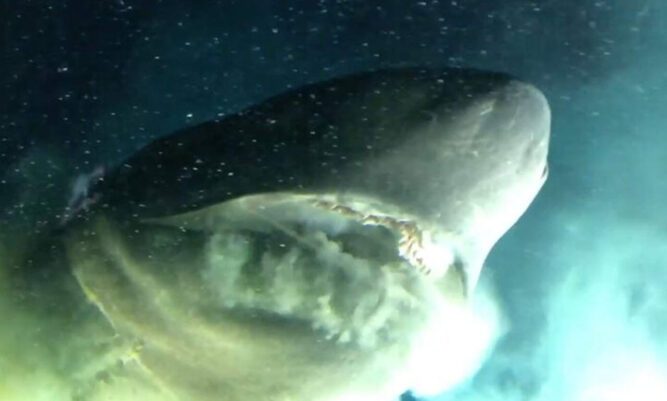
Scientists will often look to outer space to discover new things but there is still a lot that needs to be discovered right here on our own planet. We often see evidence of this when we look under the water into the deepest parts of the ocean.
Scientists continue to learn more about the earth and especially look into the unknown part of the ocean that is difficult to access. When researchers look into that area, they’re constantly amazed at the animal life that exists.

Many of us are familiar with the types of animals we see on the surface and walking on the ground. When it comes to the marine life that is under the water, however, it is more difficult to access so therefore, we don’t see it quite as often.
This became evident in 2019 when a research team went hundreds of meters below the surface of the ocean. They came into close quarters with a creature that they called monster-like, and that was a very good description.
When you look at the video, you might think that you are looking at a Megalodon but actually, you’re looking at a bluntnose sixgill shark. Sometimes, they called these sea creatures a ‘cow shark’. Whatever you call it, it is terrifying.

The female shark that is swimming in the video could grow up to 20 feet in length. This particular type of shark has been around longer than the dinosaurs and it seems as if they are curious because this one was interested in what was going on.
After the video was taken, they put it online and the video is popular on YouTube. What you may not know is that they baited the shark because they took 100 pounds of bate down with them.
One of the workers from OceanX answered a question from the comments as to how often the tag checks in with the satellites and if the sharks have to be at a certain depth for them to communicate.
Lucy Howey, from OceanX, replied: “There are satellite tags that can report to the satellites when an animal’s at the surface, however, because these are deepwater sharks that never go to the surface, we use archival tags (they’re kind of like a Fitbit in that they’re a small device that records and stores a bunch of data but to send it later). When the tag pops off it sends the data to a satellite.
“There’s a small piece of metal that attaches the tag to the animal and after a certain amount of time there’s an electrical current that corrodes the piece of metal and it floats to the surface.
“So the tag doesn’t ‘check in’ but the data does take a few weeks to download because there are only short periods of time when satellites are actually overhead to receive the signal over the course of a day, or even how many satellites are available to that part of the planet. It can also take a long time if there’s a lot of data in the tag/if the memory is full.”
